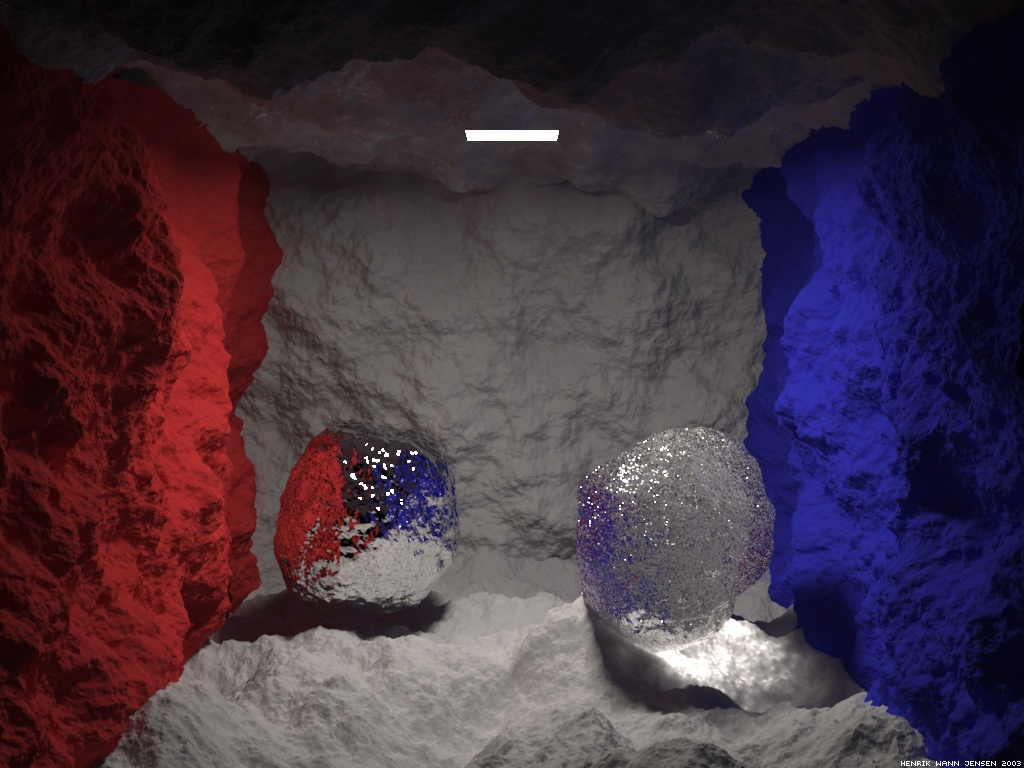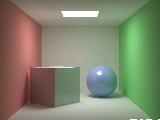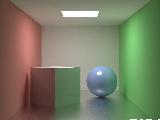
This is a rendering of the Cornell box according to the data provided by Cornell. The image was rendered using multi spectral Monte Carlo ray tracing and converted to an sRGB image for display.
| Animations | Bio | Home | Images | Links | Publications |
The Cornell box is the ubiquitous test scene for global illumination. It was introduced at Cornell university in 1984 when they developed the radiosity algorithm, and it has since become a standard test scene for new global illumination algorithms. Often the Cornell box (which is a physical model at Cornell) appears in many different variations, and the same is the case below where I have rendered several different versions using a variety of algorithms.
| Spectral rendering of the Cornell box |
 |
This is a rendering of the Cornell box according to the data provided by Cornell. The image was rendered using multi spectral Monte Carlo ray tracing and converted to an sRGB image for display. |
| Cornell box replica |
| Cornell box with glass sphere |
| Cornell box with translucent box |
 |
Here the right box is translucent. Note how the light bleeds from the light source bleeds down through the box. Also note how the box still captures the indirect illumination in the scene as well as acts as a secondary source for the other elements such as the ceiling and the wall. This image was rendered for the paper "A Rapid Hierarchical Rendering Technique for Translucent Materials". |
| Ray Tracing, Photon Mapping, and Global Illumination |
| Fractal box with two spheres |
 |
This is a "fractal" version of the box scene. The walls have been replaced with displacement mapped surfaces (generated using a fractal midpoint subdivision algorithm) and the model contains a little more than 1.6 million elements. It was rendered using 200000 photons in the global photon map and 50000 in the caustics photon map. The rendering time was 14 minutes on a Dual PII-400MHz Linux PC. |
| Fractal box with two fractal spheres |
 |
This image is an agressively displacement mapped cornell box. Both the walls and the spheres have been displaced using a turbulence function. This type of model would be very hard to render using other methods than photon mapping. The rendering time was 8 minutes on a Dual P3-800MHz Linux PC. |
| Another Cornell box series |

|

|

|
|
|
|
|
This is another variation of the Cornell box. The first two images have been rendered using the photon map and the irradiance gradient caching technique as described in the paper "Global Illumination using Photon Maps". The first image was rendered with 4 samples per pixel and the rendering time is 9 min. on a 100MHz Pentium computer running Linux. The second image has a glossy floor (using Ward's anisotropic reflection model). The glosy box image was rendered with 16 samples per pixel and the rendering time is 50 min. on a 100MHz Pentium computer running Linux. The path tracing reference image of the glossy box was rendered using 1000 samples per pixel (note that is still has noise in it).